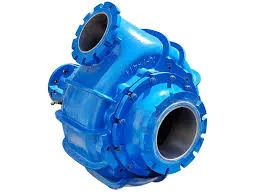Sinhala
- Afrikaans
- Albanian
- Amharic
- Arabic
- Armenian
- Azerbaijani
- Basque
- Belarusian
- Bengali
- Bosnian
- Bulgarian
- Catalan
- Cebuano
- Corsican
- Croatian
- Czech
- Danish
- Dutch
- English
- Esperanto
- Estonian
- Finnish
- French
- Frisian
- Galician
- Georgian
- German
- Greek
- Gujarati
- Haitian Creole
- hausa
- hawaiian
- Hebrew
- Hindi
- Miao
- Hungarian
- Icelandic
- igbo
- Indonesian
- irish
- Italian
- Japanese
- Javanese
- Kannada
- kazakh
- Khmer
- Rwandese
- Korean
- Kurdish
- Kyrgyz
- Lao
- Latin
- Latvian
- Lithuanian
- Luxembourgish
- Macedonian
- Malgashi
- Malay
- Malayalam
- Maltese
- Maori
- Marathi
- Mongolian
- Myanmar
- Nepali
- Norwegian
- Norwegian
- Occitan
- Pashto
- Persian
- Polish
- Portuguese
- Punjabi
- Romanian
- Russian
- Samoan
- Scottish Gaelic
- Serbian
- Sesotho
- Shona
- Sindhi
- Sinhala
- Slovak
- Slovenian
- Somali
- Spanish
- Sundanese
- Swahili
- Swedish
- Tagalog
- Tajik
- Tamil
- Tatar
- Telugu
- Thai
- Turkish
- Turkmen
- Ukrainian
- Urdu
- Uighur
- Uzbek
- Vietnamese
- Welsh
- Bantu
- Yiddish
- Yoruba
- Zulu
Telephone: +86 13120555503
Email: frank@cypump.com
නොවැ. . 18, 2024 03:44 Back to list
Understanding the Differences Between Axial and Mixed Flow Pump Designs and Applications
Axial and Mixed Flow Pumps An Overview
Pumps are critical components in various industrial and municipal applications, serving the essential function of moving fluids from one place to another. Among the various types of pumps available, axial and mixed flow pumps are two prominent designs that serve unique purposes based on the flow characteristics and operational needs.
Axial Flow Pumps
Axial flow pumps are designed to move fluid in a direction parallel to the pump's axis. These pumps utilize an impeller with blades that push the fluid along the axis of rotation. The primary characteristic of axial flow pumps is the high flow rate they can achieve, which makes them ideal for applications requiring the movement of large volumes of water or other fluids at relatively low pressures. They are commonly used in power plants for circulating cooling water, in irrigation systems, and even in floodwater mitigation efforts.
One of the significant advantages of axial flow pumps is their ability to handle both clear and moderately dirty fluids without significant wear or damage. Their design also allows for easy maintenance, as many axial flow pumps can be disassembled without disturbing the installed piping. However, they are not suitable for high-pressure applications, as their performance decreases significantly when faced with elevated resistance to flow.
Mixed Flow Pumps
axial and mixed flow pumps

Mixed flow pumps incorporate features from both axial and radial flow designs, providing a compromise between flow rate and pressure capabilities. In mixed flow pumps, the fluid moves both axially and radially as it passes through the impeller, resulting in a more versatile pump. This unique flow pattern allows mixed flow pumps to achieve moderate flow rates while maintaining the ability to generate higher pressures than axial flow pumps.
Mixed flow pumps are commonly found in applications such as water treatment plants, irrigation, and drainage systems, where conditions may vary, and adaptability is crucial. Their ability to efficiently handle a mixture of clean and debris-laden fluids further enhances their applicability across a range of industries.
Comparison and Applications
When comparing axial and mixed flow pumps, one must consider the specific requirements of the application in question. If high flow rates with lower pressures are required, axial flow pumps are typically the better choice. Conversely, if an application demands a balance between flow rates and the ability to overcome significant pressure, mixed flow pumps are more advantageous.
Both types of pumps play vital roles in fluid transport systems, each with their own strengths and limitations. From environmental management practices to industrial processes, understanding the differences between axial and mixed flow pumps enables engineers and operators to select the appropriate pump for their needs, ensuring efficiency and reliability in fluid management operations. In conclusion, selecting the right pump is crucial for the optimal performance of any system that involves fluid movement.
-
Heavy-Duty Mining Sludge Pumps - Wear-Resistant Slurry Handling
NewsAug.02,2025
-
Horizontal Split Case Pump with GPT-4 Turbo | High Efficiency
NewsAug.01,2025
-
ISG Series Pipeline Pump - Chi Yuan Pumps | High Efficiency, Durable Design
NewsAug.01,2025
-
Advanced Flue Gas Desulfurization Pump with GPT-4 Turbo | Durable & Efficient
NewsJul.31,2025
-
ISG Series Vertical Pipeline Pump - Chi Yuan Pumps | Advanced Hydraulic Design&Durable Construction
NewsJul.31,2025
-
ISG Series Vertical Pipeline Pump - Chi Yuan Pumps | Energy Efficient & Low Noise
NewsJul.31,2025










